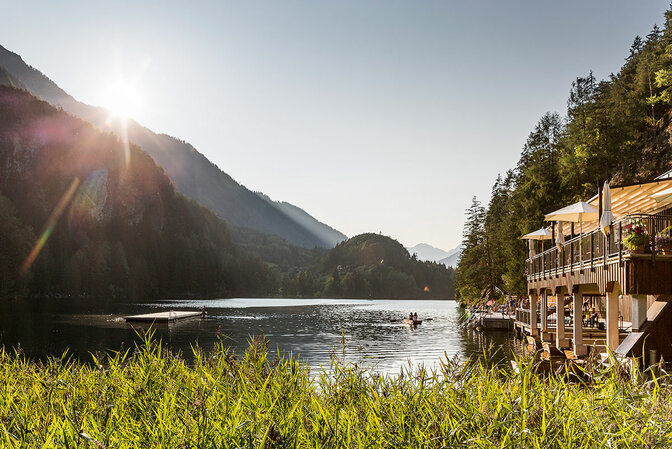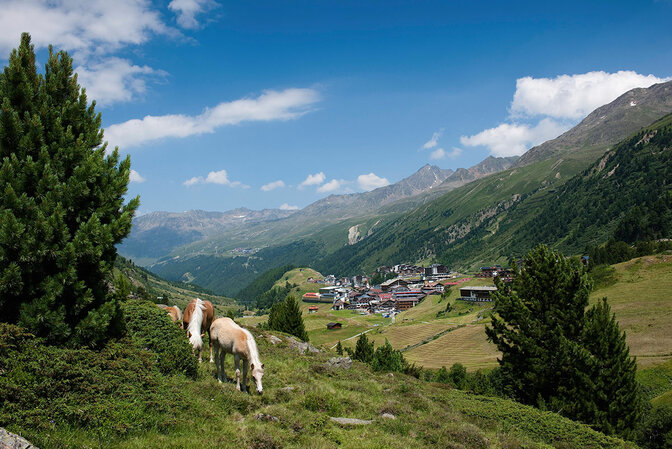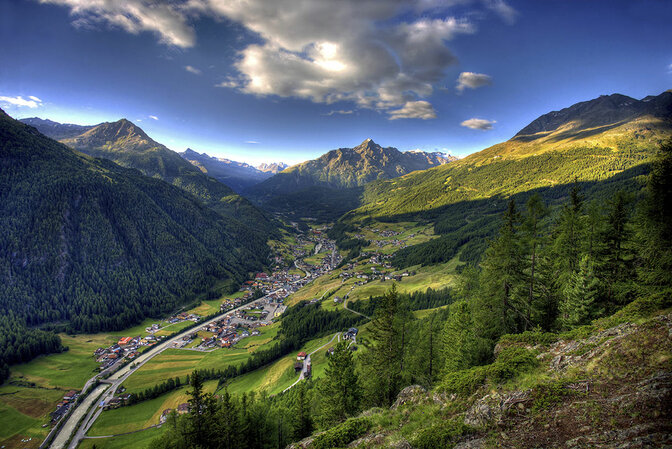Nature experience
breathtaking areas in the Ötztal
Find the breathtaking areas of the nature park throughout the Ötztal. Enjoy the trails and explore the landscapes from a completely different perspective.
Tschirgant landslide
Right at the entrance to the Ötztal lies the Tschirgant landslide nature reserve, which was created in 2009.
The "Forchet" or "Farchat", as the locals say, is a forested landslide area that has so far been little changed by man. A natural island in the middle of the intensively used valley floor of the front Ötztal, traced back to a 3,000-year-old landslide.

Landslides shape the Ötztal in the most diverse ways. For example, Lake Piburg and the Achsturz near Oetz were formed about 10,000 years ago by a post-glacial landslide.
Today, stone witnesses tell of this eventful time. As for example in the boulder forest around the Piburger See or at the Achstürzen. Here the Ötztaler Ache shows its unbridled power and energy.
Angel Wall
The steep Engelswand near the hamlet of Lehn Platzl in Umhausen rises like a wall. The Natura 2000 area, designated by the European Union, provides a habitat for rare animal and plant species. Perfectly adapted, they can colonize the many small steps and niches of the mighty wall.
In the middle of the valley meadows of Umhausen rises a small wooded hill. The Rauhe Bichl, a piece of wilderness surrounded by farmland, is a protected part of the landscape.

The Obergurgl Swiss stone pine forest is a natural monument, on the so-called "Brenner" south of Obergurgl. Here are young Swiss stone pines but also old "Wetterzirben", which survived a large forest fire in the 1880s. In the midst of the stone pine forest lies an idyllic legacy of the ice age, the stone pine forest moor. Over the millennia, a thick layer of peat developed in a gully carved out by the glacier. Preserved in it is important information from times long past, for example in the form of woods or flower pollen. "...ratchet with Gratschn..." is the name of the theme trail of the Ötztal Nature Park, which leads through the stone pine forest in the direction of Rotmoostal and to the Schönwieshütte.
Stubai Alps
Horlachtal, Sulztal, Windachtal - promising names in the ear of nature lovers. And rightly so, because the rest area Stubai Alps is characterized by its wild and untouched high mountain landscape. Valuable Swiss stone pine stands as in the natural forest reserve Windachtal, dwarf shrubs, alpine grass heaths, rock formations and glaciers characterize the picture. Ideal conditions also for science. For example, the Schrankogel in Sulztal is an important base for an international research project dealing with climate change and its consequences.

The highest peaks of the Ötztal Alps are located in the quiet area of the same name, which has also been designated by the EU as a Natura 2000 area. Among them are many well-known 3,000-meter peaks, above all the Wildspitze in the midst of mighty glaciers. The inner Ötztal is one of the most scientifically researched landscapes in the Central Alps. The center of scientific work is the Alpine Research Center in Obergurgl. It played an important role in the nomination of the Gurgler Kamm Biosphere Park by UNESCO. The fact that man has long known how to use this special habitat is proven not only by the discovery of "Ötzi" but also by the latest findings in high mountain archaeology.



